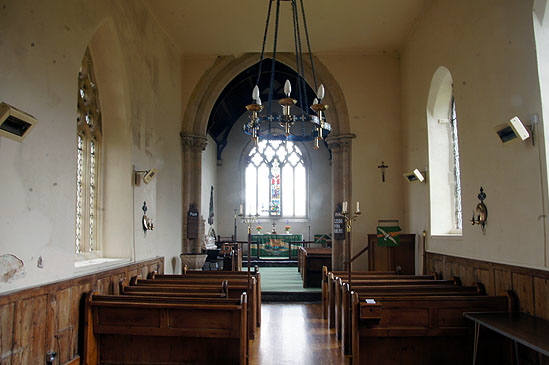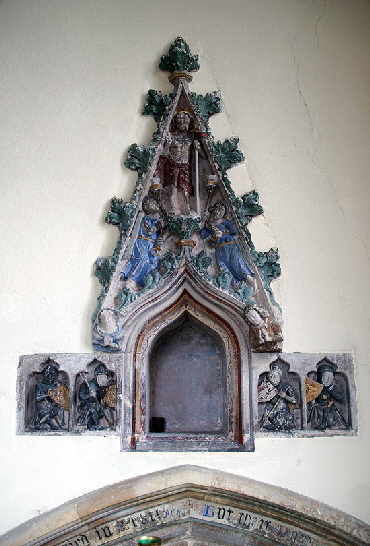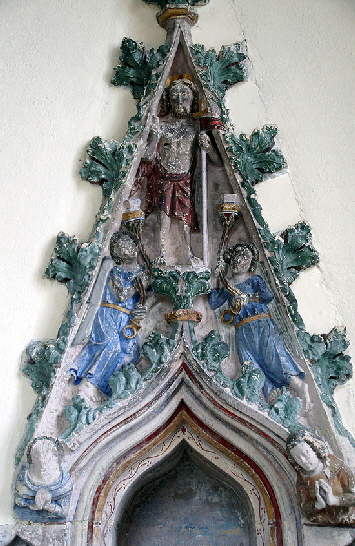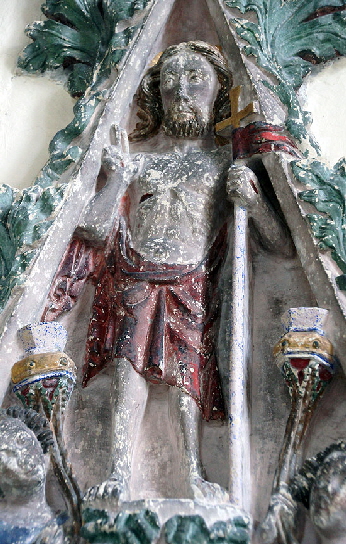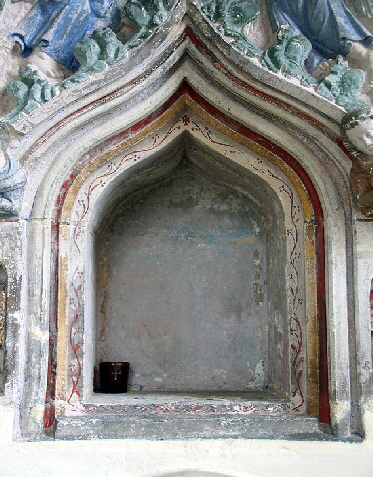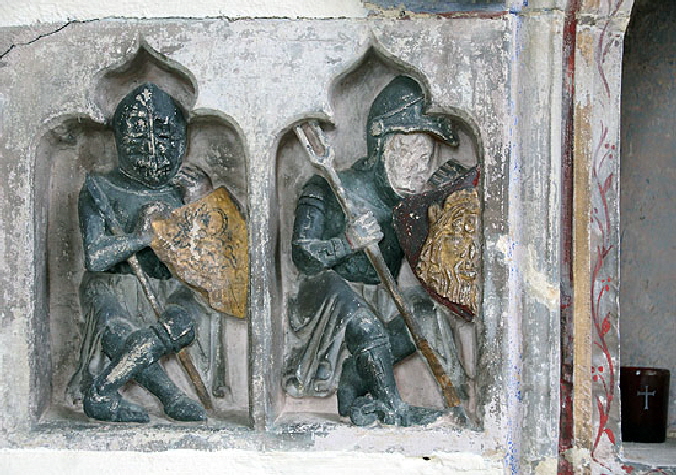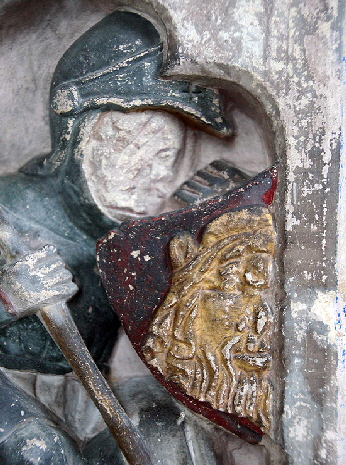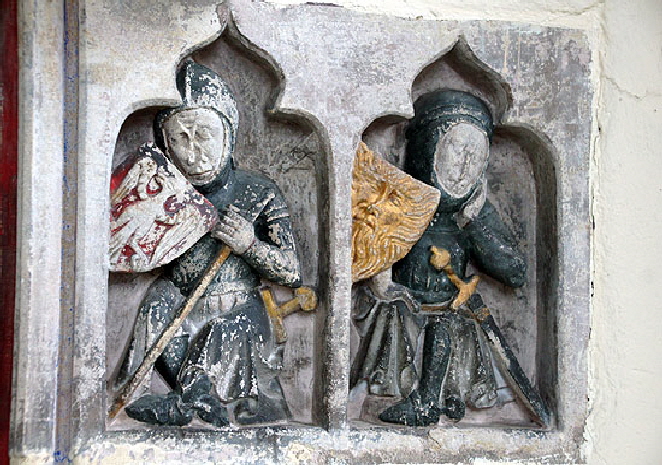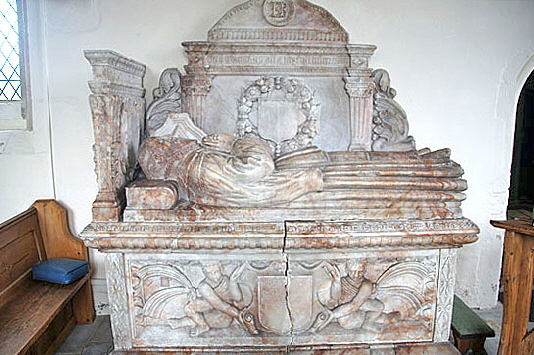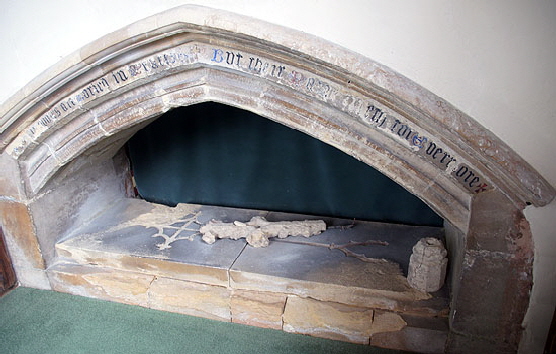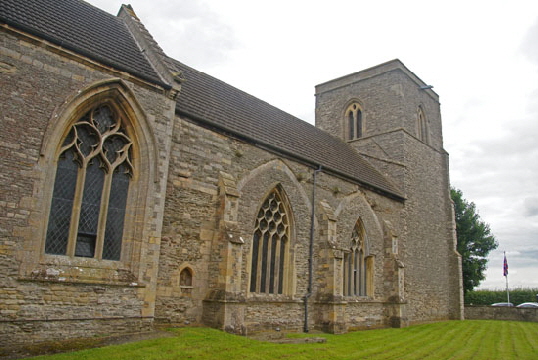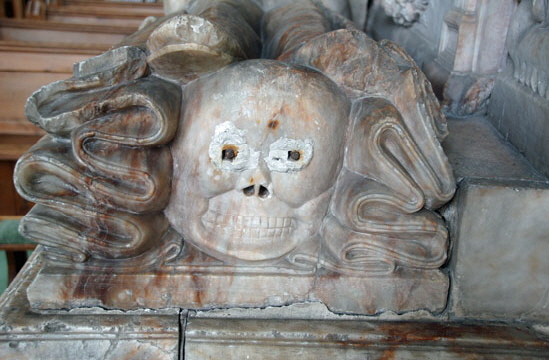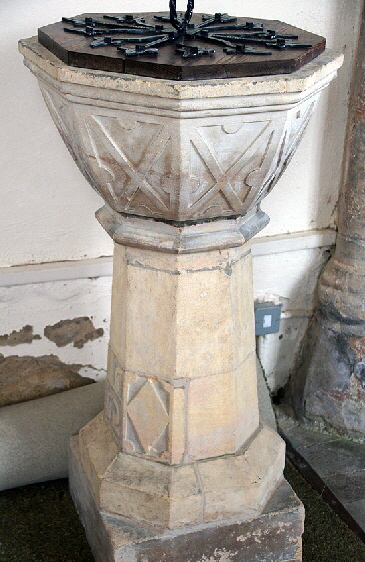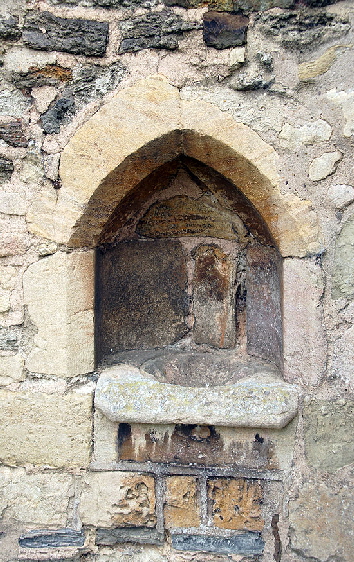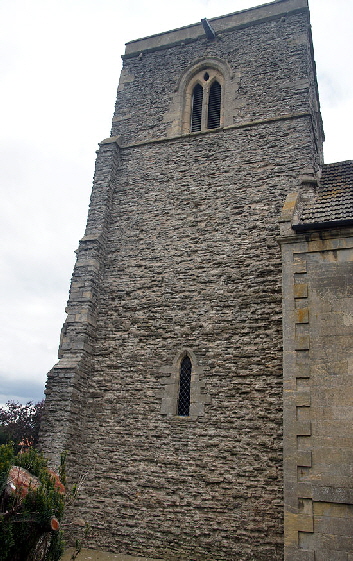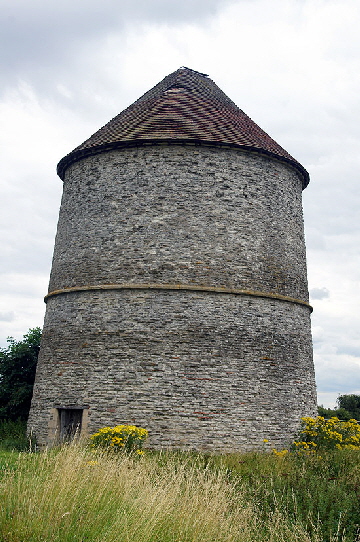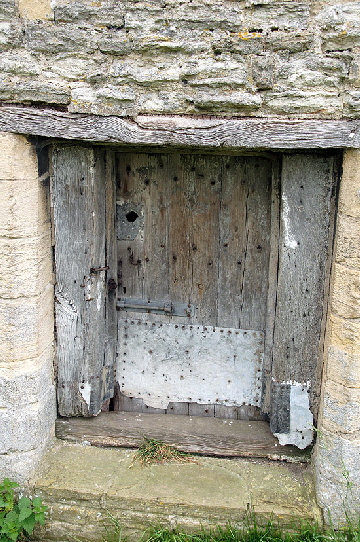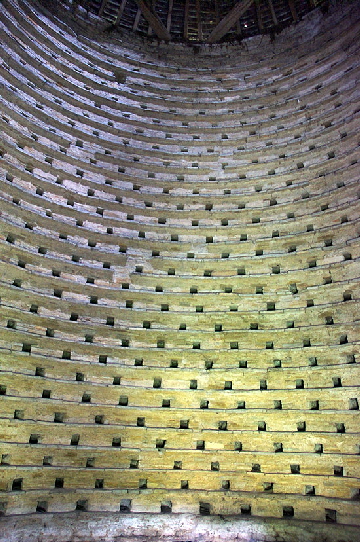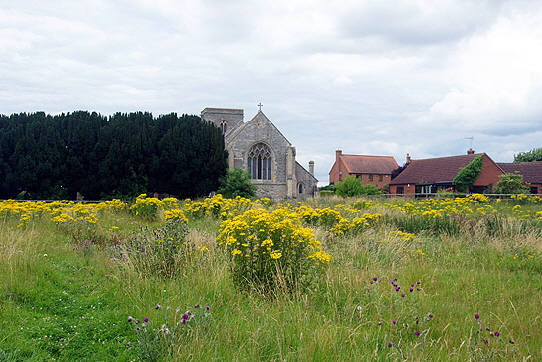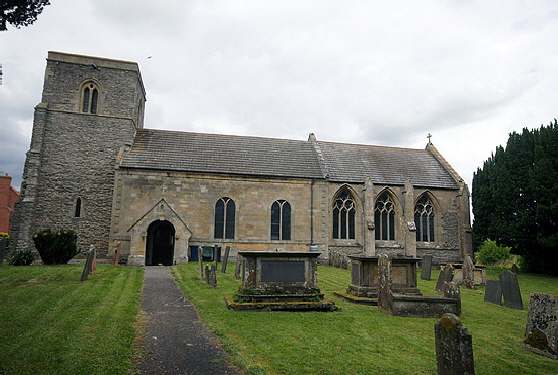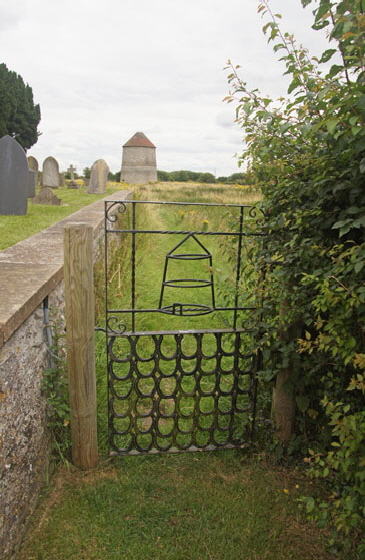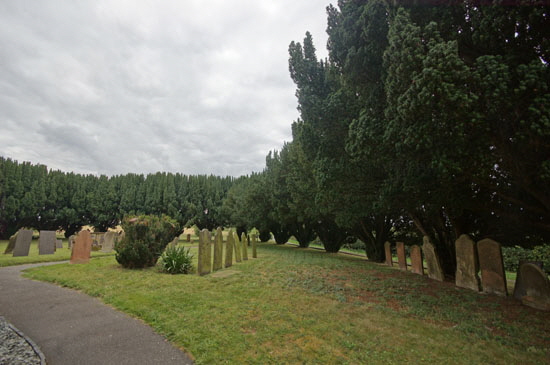|
Unlike many of his contemporaries, however, Thomas went much further and set about reconstructing the church including the construction of today's chancel and the building of another chapel on the south side. In 1341 he bought the advowson (the right to appoint priests) from the Hospitallers and obtained a licence to create a collegiate church. There were no fewer than eight priests and two clerks. Poor old Thomas was rewarded for his piety and largesse by being murdered in 1351! The college then declined before being dissolved in 1545 during the reign of Bad King Henry. With the accession of Elizabeth in 1559 it is likely the "popish" easter sepulchre was removed and hidden until less troubled times. Sometime during the seventeenth or eighteenth centuries the chapels to the north and the south of the church were demolished.
Pevsner describes the nave as "mean" and the chancel as "splendid", both of which descriptions seem to me to be a bit OTT. Really, the structure is quite ordinary throughout although the quality of the chancel windows suggest that it was a much finer church before the chapels were removed. It is the sepulchre that makes the church worth visiting - and the dovecote, of which more anon.
When you first enter the church it is a bit of a surprise all round. Many benches have been removed at the west end of the nave to leave a small open space. The floor is polished wood block and the walls have been whitewashed. Purists might hate it but it seems to me that the congregation had adapted their church to suit the realities of the twenty-first century. What use is it to have a sea of empty benches and to afflict the dwindling faithful with cold bare stone everywhere? It is easy to forget that all of our "mediaeval" churches are monuments to centuries of adaptation to changing social and religious demands.
The sepulchre is in the traditional position in the north wall of the chancel. It has been painted in modern times and there have been quite a lot of sniffy comments about this. I confess I don't really know why. It would surely have been painted in mediaeval times and the painting has been quite restrained. It is quite a simple composition. Christ stands above two angels with censers. At the base of the sepulchre are the usual four sleeping soldiers. These are, in my view, the most interesting feature and deserve much better than Pevsner's pithy comment. They are not Roman soldiers but mediaeval knights and their armour is surely of interest to military historians.
One of the knights is painted black and has his helm pulled down. The other three, although somewhat damaged, have wonderfully doleful faces in their repose (remember that they are sleeping while Christ rises from his tomb). Three have finely carved shields whereas one has a painted design that is so dire in its execution that it is surely the work of a recent bodger.
The other wonder to be seen at Sibthorpe is the dovecote. Standing about fifty metres from the church you might think it was a disused windmill and you might think it is nothing to do with the church. In fact it was built in 1340 and was part of a monastic-style infrastructure including fishponds and gardens that were used to support the canons and their support staff. Standing over forty five feet high with 1,148 nesting boxes in twenty four tiers and in fine condition it is an unmissable part of your visit here. As you enter through the tiny doorway try to imagine the noise - and stench - made by hundreds of birds.
|
